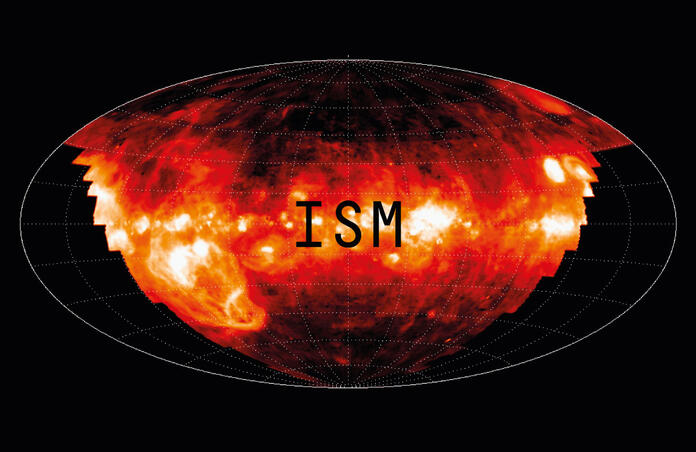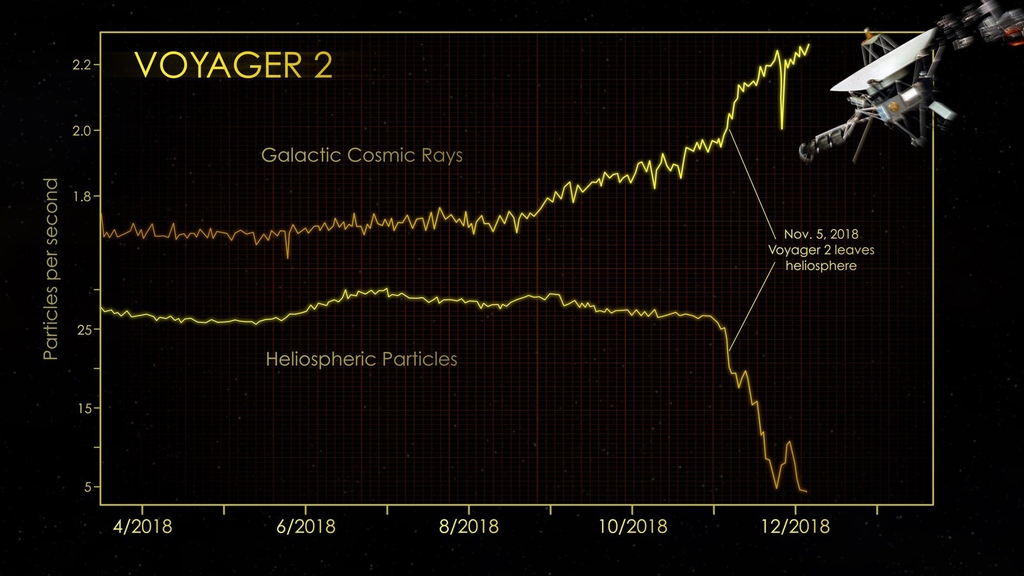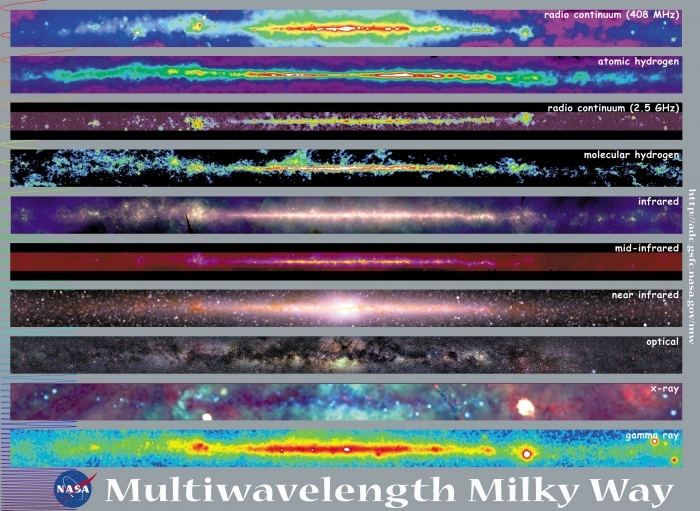What is the Interstellar Medium ?

The space between stellar systems in a galaxy is far from empty. Let's take a look at what the Interstellar Medium (ISM) contains.
Although we like to think of it as a vacuum, there are still up to 106 molecules per cm3 in the densest regions of the ISM – note that this is still much less than the 1010 in the best laboratory vacuum, and in the least dense areas it goes down to 10-4 molecules. 90% of the gas is made up of Hydrogen, in molecular H2 form, the rest is mainly Helium from primordial nucleosynthesis. This term refers to the first atoms that were formed in our Universe as it was only a few minutes old; the trace amounts of heavier elements come from stellar nucleosynthesis. The famous comic microwave background, which is basically radiation from the Early Universe, also permeates interstellar space.
Only two spacecrafts have reached the ISM and sent us back actual data: the Voyager 1 and 2 probes. In particular, the radiation detector on board Voyager 2 signalled the presence of more highly energetic cosmic rays once outside the zone of influence of the Sun’s solar winds (the heliosphere).

Then, one can distinguish between hot, ionized gas and cold neutral gas in the ISM. The latter occupies a smaller volume but provides most of the mass as it is denser, typically in the form of “clouds”. The hot ionized gas, on the other hand, is likely to originate from the overlap of supernova remnants. At the interface between the two, there is the warm ionized medium and the warm neutral medium, which are also in pressure equilibrium at about 800 Kelvin (~500°C). As we’ve seen before, there are regions where the ISM is more dynamic: molecular clouds where stars form and ionized regions like H II regions or planetary nebulae.
Added to the gas, there are dust particles, at least in the cooler regions, with 1 dust grain for about every 1012 atoms. Typically containing a silicate or carbon core surrounded by ices (e.g. ammonia, water ice), they are the cause of interstellar absorption or extinction, not all the light from the target reaches us as some is “blocked” by these grains. More specifically, the dust grains scatter light differently depending on the wavelength, which results in us observing a reddening of the light – you may have noticed that exposures taken with a red filter seem to detect more photons.

Observations at different wavelengths tell us a lot about the distribution of the types of gas and of the dust, especially when it forms the “cloud” structures. The radio emissions show us where hot ionized gas is, while in the infrared we see star-forming regions; X-rays get mostly absorbed by cold clouds. On the cover image you see the distribution of ionized hydrogen. For our purposes with optical telescopes, the exciting targets are of course nebulae and other clouds, so get ready for a one-click observation or submit your own advanced request!
Cover Image: HII distribution, Haffner, L., et al. (2003)
Image credits:
1- Voyager 2 data, NASA/JPL-Caltech/GSFC
2- Multiwavelength Milky Way, NASA Goddard Space Flight Center
